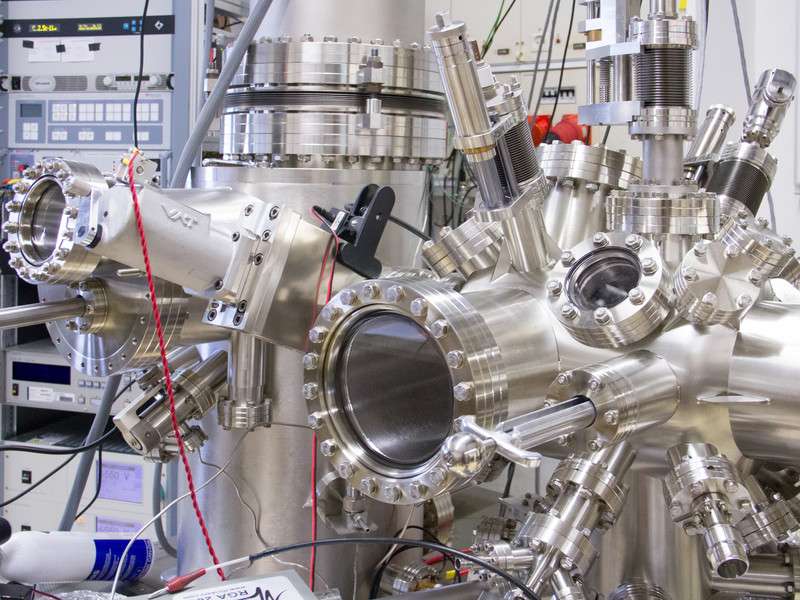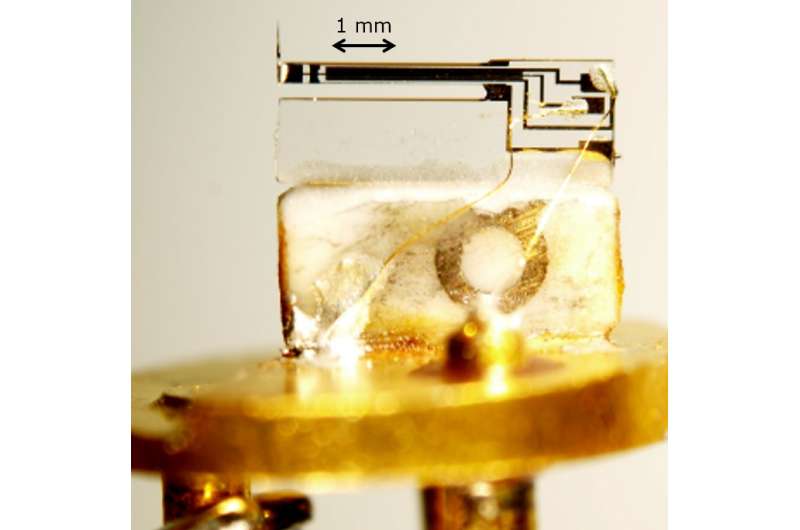Force microscope at TU Wien. Credit: Vienna University of Technology
At TU Wien (Vienna), it has become possible to control one of the most important chemical processes: switching oxygen molecules between a reactive and unreactive state.
Oxygen atoms are highly reactive, yet the world does not spontaneously burn, even though everything is surrounded by this aggressive element. Why? The reason is that normal O2 molecules, are not particularly reactive. At the Vienna University of Technology, it has now been possible to selectively switch individual oxygen molecules sitting on a titanium oxide surface between a non-reactive to a reactive state using a special force microscope. This process was viewed for the first time in high-resolution images.
Activation: Heat, or Electrons
"There are several ways to switch a stable, non-reactive O2 molecule into a reactive state," explains Martin Setvin, a member of the research group of Prof. Ulrike Diebold at the Institute for Applied Physics at the Vienna University of Technology. "You can increase the temperature - that happens when you burn things. Alternatively, you can add an additional electron to the molecules, this also makes them chemically active."
This process of activating oxygen molecules by adding electrons is ubiquitous - all living organisms use this trick, and modern fuel cells also work in this way. At the TU Wien, Setvin and coworkers are now able to activate individual O2 molecules at will using a force microscope, and learn how the process occurs at the atomic scale.
Sensor inside the force microscope. Credit: Vienna University of Technology
In the experiments, oxygen molecules were studied on the surface of a titanium oxide crystal at extremely low temperatures. Titanium oxide is a particularly interesting material used in many areas - from the coating for artificial hip joints to self-cleaning, dirt-repellent mirrors. It is also a photocatalyst, which means that it can induce chemical reactions when irradiated with light.
Seeing and Feeling Atoms
Key to the success of the oxygen experiments was a state-of-the-art atomic-force microscope, purchased by Prof. Diebold using proceeds of her 2014 Wittgensteinpreis Award. "A tiny needle is vibrated and moved across the surface. When the atoms at the very end of the tip come close to the surface, the tip feels a force and the oscillation changes. From this tiny change, one can create an image showing where the atoms are, " says Diebold. "Essentially, the reactive oxygen molecules that have an extra electron exert a stronger force on the tip than the unreactive ones, and thus we can distinguish them." Interestingly, it is also possible to inject an additional electron to an individual oxygen molecule with the same tip, and then observe the transition from the inactive to the active state. The same process also happens when the surface of the titanium oxide is irradiated with light – electrons are liberated inside the material, and can come to the surface to activate one of the oxygen molecules.
"Whether we add an electron using the microscope or by irradiating the titanium oxide - the end result is the same," says Ulrike Diebold. "Our method gives us a whole new level of control over this process, and opens up new possibilities for investigating the inner workings of photocatalysts."
More information: Martin Setvin et al. Electron transfer between anatase TiOand an Omolecule directly observed by atomic force microscopy, Proceedings of the National Academy of Sciences (2017). DOI: 10.1073/pnas.1618723114
Journal information: Proceedings of the National Academy of Sciences
Provided by Vienna University of Technology

























